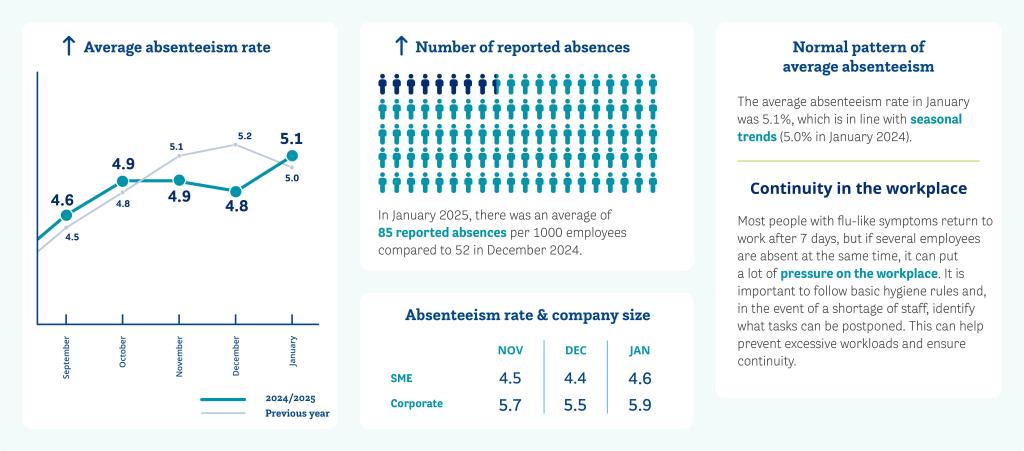Reported absences in January rise to highest level in four years

That is based on figures from the occupational health and safety service providers ArboNed and HumanCapitalCare, both part of HumanTotalCare and jointly serving around 1 million employees in the Netherlands.
Within one month, the number of reported absences went from the lowest to the highest
After a decrease in the number of reported absences in December, the lowest number in four years (52 per 1000 employees), the number of reports increased in January 2025 to the highest level in four years (85 per 1000 employees). The cause behind this significant increase was mainly flu-like symptoms. “Although short-term absenteeism due to flu-like symptoms is always higher during the winter months, this year we are seeing the largest single-month increase in four years”, stated Iris Homeijer, Occupational Physician and Medical Affairs Director at HumanCapitalCare.
Normal pattern of average absenteeism
A few weeks ago, Nivel and the National Institute for Public Health and the Environment (RIVM) announced a flu epidemic. Despite the increase in the number of reports in January compared to December, the average absenteeism rate in January of 5.1% remains in line with seasonal trends (5.0% in January 2024). The number of reported absences appears to be decreasing again slightly since the first week of February, but it is still unclear how it will develop. In previous years, occupational health and safety services saw the peak in absenteeism in February or March.
Ensuring continuity in the workplace
Although most people with flu-like symptoms can return to work after seven days, if several employees are absent at the same time, it can put a lot of pressure on the workplace. Work may be left undone or colleagues may end up with additional tasks on their plate. Homeijer: “This is why it is important to take preventative measures such as keeping your distance, washing your hands more often and properly ventilating rooms. During periods of staff shortages, it is important to work together to identify what tasks can be postponed. This helps prevent putting excessive workloads on employees and helps ensure the continuity of the company.”
Time to recover
Recent research by the CNV shows that 1 in 5 employees are urged by their employers to return to work quickly after an illness. Homeijer: “In my experience, many employees are given the time and trust by their employers to recover properly. This also has long-term benefits. If someone comes back too quickly, they increase the risk of infecting their colleagues and can even lead to longer absences.”
Runny nose protocol: Stay home if you have a cold
In workplaces where there are vulnerable people, it is becoming more common to have a rule that people should stay home if they have a cold: the ‘runny nose’ protocol. “Since the Covid pandemic, we’ve been seeing more and more people working from home when they have a cold, if their work allows it,” said Homeijer. “I see this as a positive development, where the emphasis is on what someone can still do, while also taking the health of others into account.”